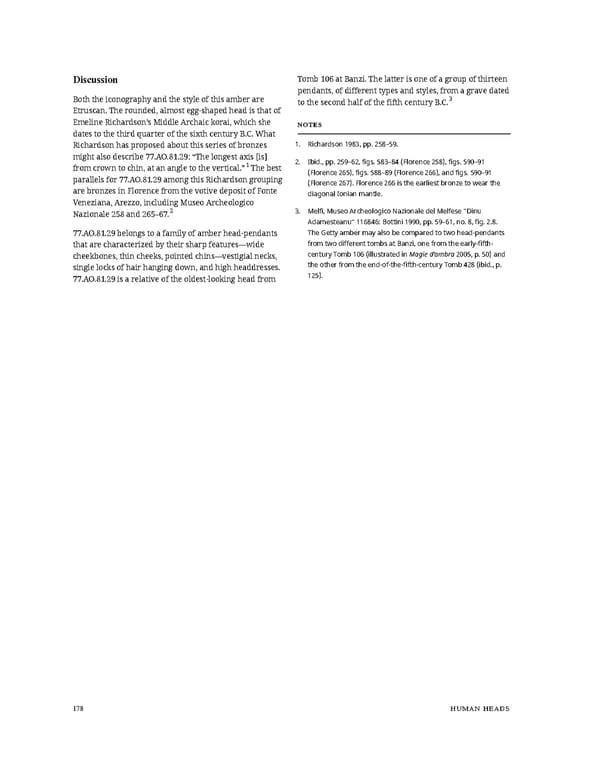Tomb 106 at Banzi. The latter is one of a group of thirteen Discussion pendants, of different types and styles, from a grave dated Both the iconography and the style of this amber are to the second half of the fifth century B.C.3 Etruscan. The rounded, almost egg-shaped head is that of Emeline Richardson’s Middle Archaic korai, which she NOTES dates to the third quarter of the sixth century B.C. What Richardson has proposed about this series of bronzes 1. Richardson 1983, pp. 258–59. might also describe 77.AO.81.29: “The longest axis [is] 2. Ibid., pp. 259–62, figs. 583–84 (Florence 258), figs. 590–91 from crown to chin, at an angle to the vertical.”1 The best parallels for 77.AO.81.29 among this Richardson grouping (Florence 265), figs. 588–89 (Florence 266), and figs. 590–91 (Florence 267). Florence 266 is the earliest bronze to wear the are bronzes in Florence from the votive deposit of Fonte diagonal Ionian mantle. Veneziana, Arezzo, including Museo Archeologico Nazionale 258 and 265–67.2 3. Melfi, Museo Archeologico Nazionale del Melfese “Dinu Adamesteanu” 116846:Bottini 1990, pp. 59–61, no. 8, fig. 2.8. 77.AO.81.29 belongs to a family of amber head-pendants The Getty amber may also be compared to two head-pendants that are characterized by their sharp features—wide from two different tombs at Banzi, one from the early-fifth- cheekbones, thin cheeks, pointed chins—vestigial necks, century Tomb 106 (illustrated in Magie d’ambra 2005, p. 50) and single locks of hair hanging down, and high headdresses. the other from the end-of-the-fifth-century Tomb 428 (ibid., p. 77.AO.81.29 is a relative of the oldest-looking head from 125). 178 HUMAN HEADS
 Ancient Carved Ambers in the J. Paul Getty Museum Page 187 Page 189
Ancient Carved Ambers in the J. Paul Getty Museum Page 187 Page 189